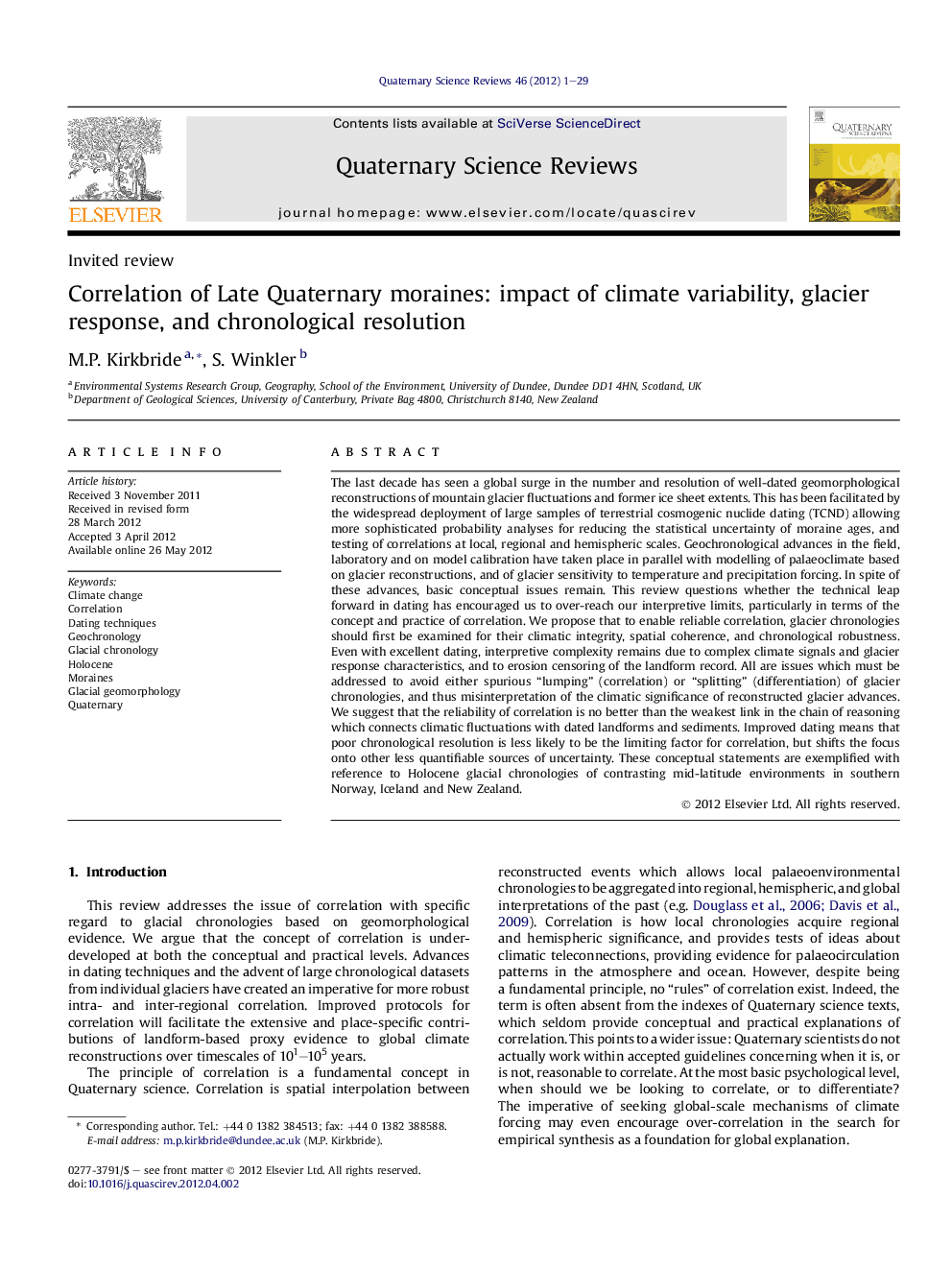| Article ID | Journal | Published Year | Pages | File Type |
|---|---|---|---|---|
| 4735445 | Quaternary Science Reviews | 2012 | 29 Pages |
The last decade has seen a global surge in the number and resolution of well-dated geomorphological reconstructions of mountain glacier fluctuations and former ice sheet extents. This has been facilitated by the widespread deployment of large samples of terrestrial cosmogenic nuclide dating (TCND) allowing more sophisticated probability analyses for reducing the statistical uncertainty of moraine ages, and testing of correlations at local, regional and hemispheric scales. Geochronological advances in the field, laboratory and on model calibration have taken place in parallel with modelling of palaeoclimate based on glacier reconstructions, and of glacier sensitivity to temperature and precipitation forcing. In spite of these advances, basic conceptual issues remain. This review questions whether the technical leap forward in dating has encouraged us to over-reach our interpretive limits, particularly in terms of the concept and practice of correlation. We propose that to enable reliable correlation, glacier chronologies should first be examined for their climatic integrity, spatial coherence, and chronological robustness. Even with excellent dating, interpretive complexity remains due to complex climate signals and glacier response characteristics, and to erosion censoring of the landform record. All are issues which must be addressed to avoid either spurious “lumping” (correlation) or “splitting” (differentiation) of glacier chronologies, and thus misinterpretation of the climatic significance of reconstructed glacier advances. We suggest that the reliability of correlation is no better than the weakest link in the chain of reasoning which connects climatic fluctuations with dated landforms and sediments. Improved dating means that poor chronological resolution is less likely to be the limiting factor for correlation, but shifts the focus onto other less quantifiable sources of uncertainty. These conceptual statements are exemplified with reference to Holocene glacial chronologies of contrasting mid-latitude environments in southern Norway, Iceland and New Zealand.
► Outlines conceptual complexities of interpreting past climate from moraine sequences. ► Highlights the multi-faceted nature of error in moraine correlation. ► Explores origins of false correlation and differentiation of glacial chronologies. ► Questions whether age determination remains the limiting uncertainty for correlation. ► Provides contrasting case studies exemplifying these interpretive issues.
